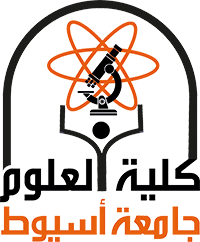الابحاث
كلية العلوم
Assiut University
الابحاث
Assiut University
Our main goal is to maximize the opportunities and support for undergraduate and graduate students in Physics.
The Department of Physics created strategic plans to guide the future development of the department.
1.Teaching general and special courses in various branches of physics.
2. Developing the skills of students to logically and scientifically process problems based on the principles of accepting, analyzing, and concluding substantive solutions to the problems in hand.
3. Developing the spirit of scientific research and encouraging innovations.
4. Preparing scientifically qualified cadres to meet the needs of the labor market in the public and private sectors.
5. Preparing the students to continue their studies and scientific research in various research centers.
6. Providing better services for undergraduate students to learn physics and gain useful skills through educational programs in accordance with the national standards. This enables students to become competent users of physics and continue to advance their chosen professions and function as productive citizens.
7. Contributing to the advancement of the physical sciences through graduate programs and research.
8. Each faculty member of the department should continue or initiate activities that enhance his teaching effectiveness.
9. Communicating with industry and companies to solve environmental and energy resources maintenance of the society and technology.
In its second strategic plan, Physics Department has set a vision of sharply increased recognition of research programs covering a wide range of research activities both general and specific aspects of faculty development. To achieve this goal, below is reported the summary of current research perspectives
There are currently research teams working in Nano-science and Nanotechnology seeking to foster and promote the design, characterization, production, and application of structures, by controlling shape and size at the nano-meter scale. The department focuses on the areas that could greatly benefit from the further development of research in nano-science and nanotechnology specially the study of societal impact of Nanotechnology. Examples are nano-spintronics, nano-photonics and sensors.
Thin film technology has been developed primarily for the need of the integrated circuit industry. The demand for development of smaller devices with higher speed requires advanced materials, especially in the new generation of integrated circuits. In this regard, physics and technology of thin films can play an important role. The research group in bulk chalcogenide glasses and thin film technology are interested in the deposition of materials for thin film processes ranging from metals and pure elements to more complex compounds which can be applied to different substrate materials. By properly choosing the technology, the deposition and the substrate materials enhanced and tailored Deposited thin film layer can meet the special requirements of a particular application.
Developing renewable energy sources due to its ecological reasons significance in replacing oil and coal. The performance of any solar cell or photovoltaic cell is intimately related to the properties of the material of which they are made. Because of these reasons the team research is focused on the field of photovoltaic and development of environmental friendly materials that exhibit properties suitable for photovoltaic applications, or devices capable of converting solar power to electrical energy with Moderate efficiency at low cost and possessing high stability.
Plasma science has in turn spawned new avenues of basic science. Basic plasma science continues to be a vibrant research area. Recent new discoveries have occurred in understanding extremely cold plasmas which condense to crystalline states, the study of high-intensity laser interactions, new highly-efficient lighting systems, and plasmasurface interactions important for computer manufacturing. Because plasmas are conductive and respond to electric and magnetic fields and can be efficient sources of radiation, they are used in a large number of applications where such control is needed or when special sources of energy or radiation are required. Plasma physics is an important field of study in many research activities in the department.
The main part of our postgraduate education is radiation physics. There are some important areas in which qualified physicists are required to ensure safe use of ionized radiation. Research in radiation physics covers mainly the medical applications of radiation such as radiotherapy, medical technology and informatics in health care. For this reason the Radiation and Nuclear Physics Laboratory in the Physics department is not only a research group, but also a teaching laboratory for graduate and undergraduate students. With more focus on clinical applications. The research group is always in close cooperation with South Valley Cancer Institute. Radiation protection research and natural environmental radioactivity and estimation of radiation exposure are also conducted in collaboration with other radiation protection organizations.
Progress in crystal growth is highly demanded in view of its recent advancements in the fields of semiconductors, polarizers, transducers, infrared detectors, ultrasonic amplifiers, ferrites, magnetic garnets, solid state lasers, nonlinear optic, piezoelectric, acousto-optic, photosensitive materials and crystalline thin films for microelectronics and computer industries. Advance in solid state science and technology depends critically on the availability and knowledge of growing single crystals. This has stimulated the development of many different techniques for production of single crystals of specified structure and impurity concentrations.
Superconductivity and low temperature physics is an emergent field. Basic properties of superconductors for different materials at low temperature are investigated with the view to obtain high Tc superconductors. Overview of applications, squids, microwave devices, power applications. Low temperature techniques, a summary of different cooling methods are widely used in this direction.
Substantial Increase of Multidisciplinary and Collaborative Research Projects:
As the scope of scientific inquiry enlarges, the department explicitly encourages collaborative and multidisciplinary projects to move knowledge from the lab to application. Researchers in the department are increasingly collaborating in multidisciplinary research groups to increase the potential for both knowledge and unique issues of sharing research to gain complementary expertise, save time, or decrease expenses. Others collaborate, to answer research questions, solve problems, and ability to bring more experience, etc.
| # | Title | Research Year |
|---|---|---|
| 2361 | Large Scale Composite Nanowires and 3D Nanostructures for Energy Conversion and Storage |

